Simulation Analysis of Arc Interruption Characteristics in Disconnector
Abstract
:1. Introduction
2. Simulation Model and Method
2.1. Simulation Model
2.2. Simulation Method
3. Analysis of Results
3.1. Arc Interruption Characteristic of AC Current
3.2. Arc Interruption Characteristic of DC Current (200 A)
3.3. Arc Interruption Characteristic of DC Current (800 A)
4. Conclusions
- (1)
- The arc-extinguishing chamber structure of the disconnector shown in this paper can extinguish the AC arc, and the arcing time of the AC arc is shorter than that of the DC arc, mainly because the AC current has a natural zero-crossing point.
- (2)
- It can be seen from the arc evolution characteristics that the lower utilization rate of splitter plates leads to lower arc voltage, which makes it difficult to extinguish the DC arc. Therefore, the dynamic and static contact structure will be redesigned and the break length will be increased in order to realize the interruption of the DC arc.
- (3)
- The dynamic and static contact structure can be designed as a nozzle structure to accelerate the airflow and reduce air vortices in order to achieve the rapid extinguishment of the DC high-voltage arc.
- (4)
- The arc simulation model established in this paper can be extended and applied to analyze the arc characteristics of other gas switching, and it is expected to provide theoretical guidance for the optimal design of switching appliances.
- (5)
- The breakdown phenomenon cannot be considered in the method proposed in this paper. This work will be researched in future work.
Author Contributions
Funding
Informed Consent Statement
Data Availability Statement
Conflicts of Interest
References
- Yuan, Z.; Guo, P.; Liu, G.; Zhao, Y. Review on control and protection for renewable energy integration through VSC-HVDC. High Volt. Eng. 2020, 46, 1473–1488. [Google Scholar]
- Hua, Y.; Wang, N.; Zhao, K. Simultaneous Unknown Input and State Estimation for the Linear System with a Rank-Deficient Distribution Matrix. Math. Probl. Eng. 2021, 2021, 6693690. [Google Scholar] [CrossRef]
- Liu, C.; Zhang, Y.; Sun, J.; Cui, Z.; Wang, K. Stacked bidirectional LSTM RNN to evaluate the remaining useful life of supercapacitor. Int. J. Energy Res. 2021, 1–10. [Google Scholar] [CrossRef]
- Xingwen, L.; Shenli, J.; Boya, Z. Research and application on physical farameters calculation and behavior simulation of gas switching arc. High Volt. Eng. 2020, 46, 757–771. [Google Scholar]
- Liu, C.; Li, Q.; Wang, K. State-of-charge estimation and remaining useful life prediction of supercapacitors. Renew. Sustain. Energy Rev. 2021, 150, 111408. [Google Scholar] [CrossRef]
- Wang, K.; Liu, C.; Sun, J.; Zhao, K.; Wang, L.; Song, J.; Duan, C.; Li, L. State of Charge Estimation of Composite Energy Storage Systems with Supercapacitors and Lithium Batteries. Complexity 2021, 2021, 8816250. [Google Scholar] [CrossRef]
- Artale, G.; Caravello, G.; Cataliotti, A.; Cosentino, V.; Di Cara, D.; Guaiana, S.; Panzavecchia, N.; Tinè, G. Characterization of DC series arc faults in PV systems based on current low frequency spectral analysis. Measurement 2021, 5, 109770. [Google Scholar] [CrossRef]
- Sun, L.; Wu, H.; Lu, X. Study on the Feature Space Detection Method of DC Arc Fault for Photovoltaic system. E3S Web Conf. 2021, 256, 01015. [Google Scholar] [CrossRef]
- Kim, H. Aging Characteristics of Contact Electrodes of Low Voltage DC Switches. Energies 2021, 14, 6838. [Google Scholar] [CrossRef]
- Hashemi, E.; Niayesh, K. DC Current Interruption Based on Vacuum Arc Impacted by Ultra-Fast Transverse Magnetic Field. Energies 2020, 13, 4644. [Google Scholar] [CrossRef]
- Yin, J.; Wang, Q.; Li, X.; Xu, H. Numerical Study of Influence of Frequency and Eddy Currents on Arc Motion in Low-Voltage Circuit Breaker. IEEE Trans. Compon. Packag. Manuf. Technol. 2018, 8, 1373–1380. [Google Scholar] [CrossRef]
- Yin, J.; Wang, Q.; Zhang, B.; Zhang, P.; Li, X. Effect of Frequency on Arc Motion in Multiple Parallel Contacts’ System. IEEE Trans. Plasma Sci. 2019, 47, 1957–1963. [Google Scholar] [CrossRef]
- Yin, J.; Liu, G.; Tang, F.; Lv, Q.; Li, X. Convection effect on an arc plasma evolution process in a two parallel contact system. Plasma Sci. Technol. 2020, 22, 045401. [Google Scholar] [CrossRef]
- Chong, N.I.; Xian, M.E.; Huang, H.; Tao, Z.H.; Surong, S.U.; Haixing, W.A. Numerical simulation of the effects of protrusion on DC arc anode attachment. Plasma Sci. Technol. 2021, 23, 104006. [Google Scholar]
- Yokomizu, Y.; Ueda, Y.; Matsumura, T.; Ichikawa, T.; Niwa, Y.; Sakaguchi, W. Electrode fall voltage of arc between deion plates during direct-current interruption period. J. Phys. D Appl. Phys. 2017, 50, 265601. [Google Scholar] [CrossRef]
- Chen, Y.; Wang, Y.; Silaen, A.K.; Zhou, C.Q. Numerical Investigation of DC Electric Arc Behavior Under the Consideration of Electrode Movement; AISTech: Cleveland, OH, USA, 2021. [Google Scholar]
- Tsusaka, A.; Hasegawa, K.; Matsumura, T.; Yukita, K.; Goto, Y.; Miyamoto, A.; Ito, H.; Yokomizu, Y. A study on estimation of arc parameters for low voltage DC arc breaking process. In Proceedings of the 2019 IEEE Third International Conference on DC Microgrids (ICDCM), Matsue, Japan, 20–23 May 2019; pp. 1–6. [Google Scholar] [CrossRef]
- Wang, G.; Wang, Y.; Zhang, L.; Xue, S.; Dong, E.; Zou, J. A Novel Model of Electromechanical Contactors for Predicting Dynamic Characteristics. Energies 2021, 14, 7466. [Google Scholar] [CrossRef]
- Smugala, D.; Bonk, M. Study of Arc Parameters of AC Relays Operating under Distorted Supply Voltage Conditions. Energies 2020, 13, 4785. [Google Scholar] [CrossRef]
- Najam, A.; Pieterse, P.; Uhrlandt, D. Electrical Modelling of Switching Arcs in a Low Voltage Relay at Low Currents. Energies 2020, 13, 6377. [Google Scholar] [CrossRef]
- Kim, W.; Kim, Y.-J.; Kim, H. Arc Voltage and Current Characteristics in Low-Voltage Direct Current. Energies 2018, 11, 2511. [Google Scholar] [CrossRef] [Green Version]
- Lindmayer, M. Simulation of Switching Arcs Under Transverse Magnetic Fields for DC Interruption. IEEE Trans. Plasma Sci. 2016, 44, 187–194. [Google Scholar] [CrossRef]
- Lindmayer, M. Cooling Mechanisms of Switching Arcs Under Transverse Magnetic Fields in Comparison with Arcs without Magnetic Blast. IEEE Trans. Plasma Sci. 2018, 46, 444–450. [Google Scholar] [CrossRef]
- Islam, A.; Birtwhistle, D.; Saha, T.K.; Islam, M.S. Interruption of low-voltage DC arc in air under axial magnetic field. IEEE Trans. Power Deliv. 2020, 35, 977–986. [Google Scholar] [CrossRef]
- Murphy, A. Transport coefficients of air, argon-air, nitrogen-air, and oxygen-air plasmas. Plasma Chem. Plasma Process. 1995, 15, 279–307. [Google Scholar] [CrossRef]
- Sun, H.; Wu, Y.; Tanaka, Y.; Tomita, K.; Rong, M. Investigation on chemically non-equilibrium arc behaviors of different gas media during arc decay phase in a model circuit breaker. J. Phys. D Appl. Phys. 2019, 52, 075202. [Google Scholar] [CrossRef]
- Nan, Y.; Wang, L.; Zhu, J.; Deng, Y.; Liu, F.; Yin, J.; Tian, T.; Li, X. Analysis of interruption characteristics of DC miniature circuit breaker with different structures. In Proceedings of the 2019 IEEE Holm Conference on Electrical Contacts 2019, Milwaukee, WI, USA, 14–18 September 2019. [Google Scholar] [CrossRef]
- Yin, J.; Wang, Q.; Li, X.; Tian, T.; Liu, H. Experimental evaluation of outgassing characteristics of polymers on air arc behavior. In Proceedings of the 2020 IEEE 66th Holm Conference on Electrical Contacts and Intensive Course (HLM), San Antonio, TX, USA, 30 September–7 October 2020; pp. 15–19. [Google Scholar] [CrossRef]



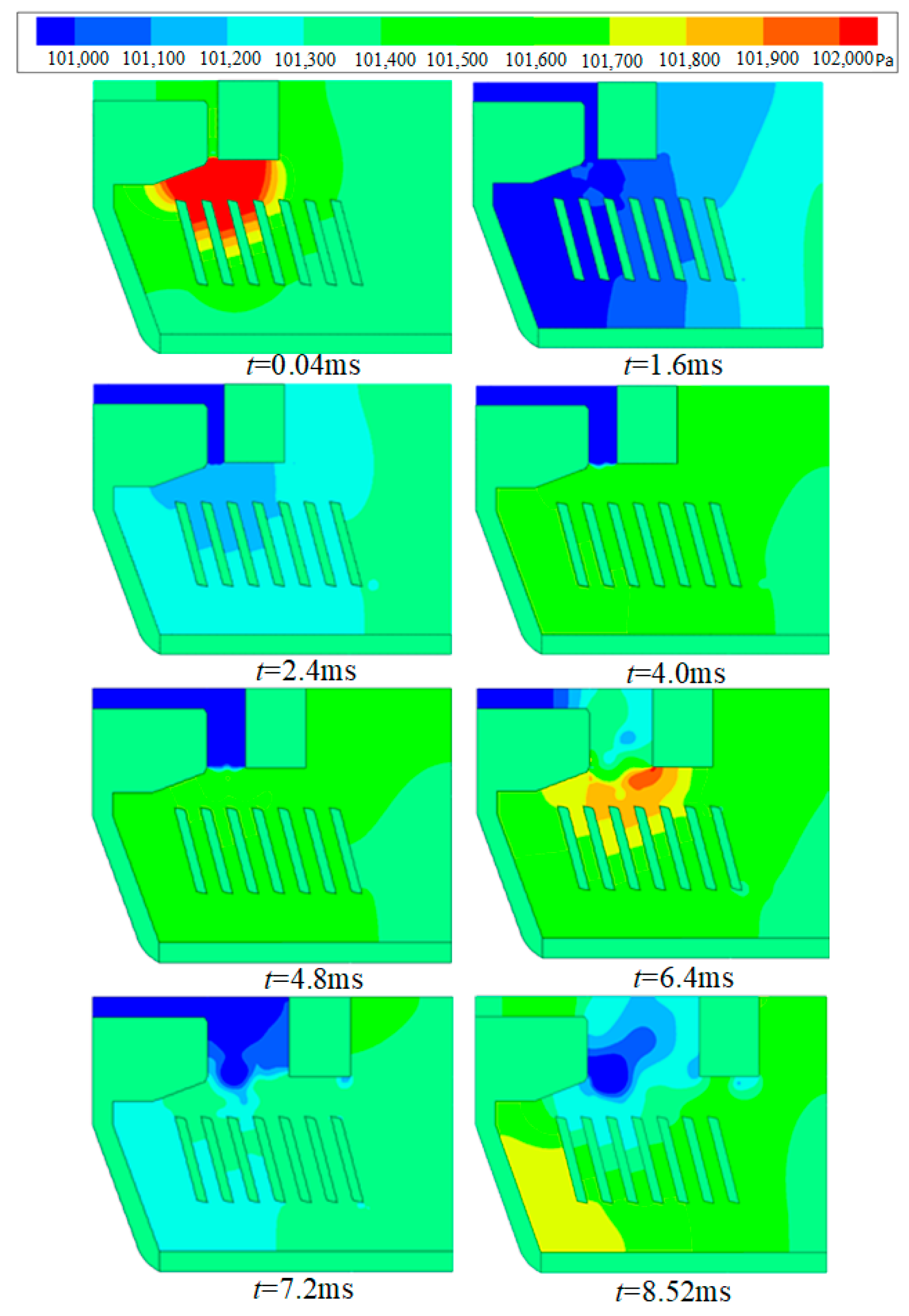
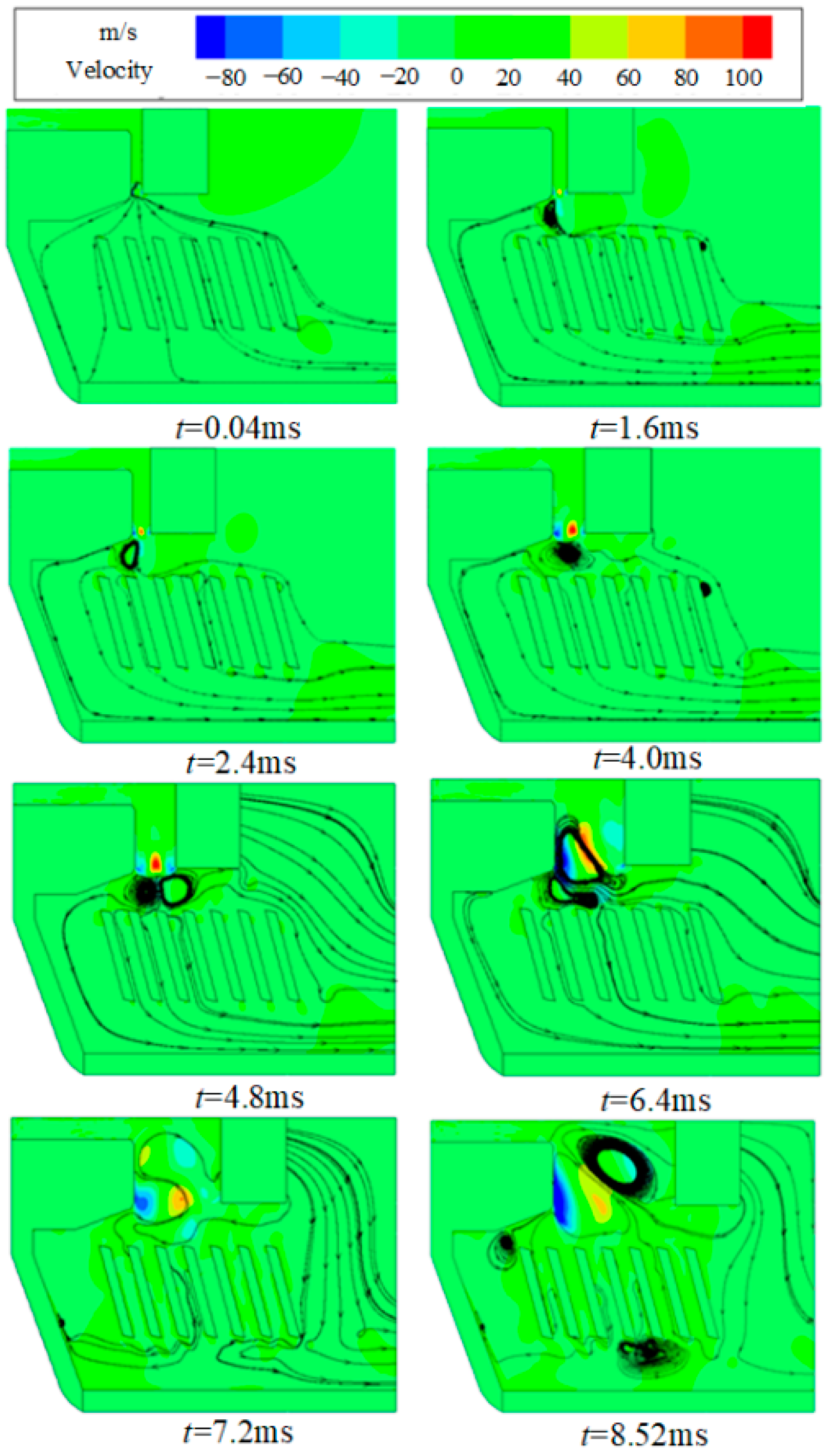
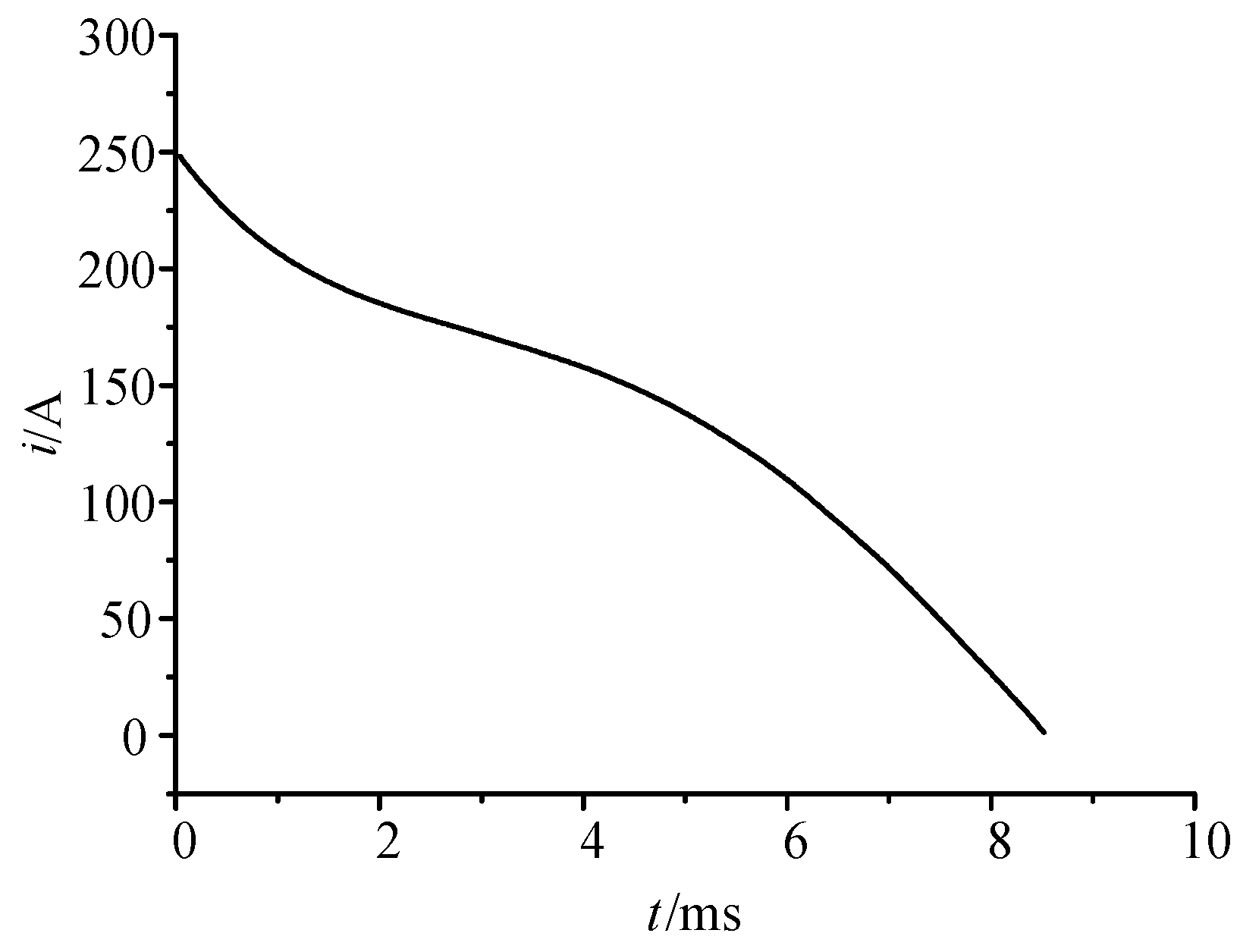
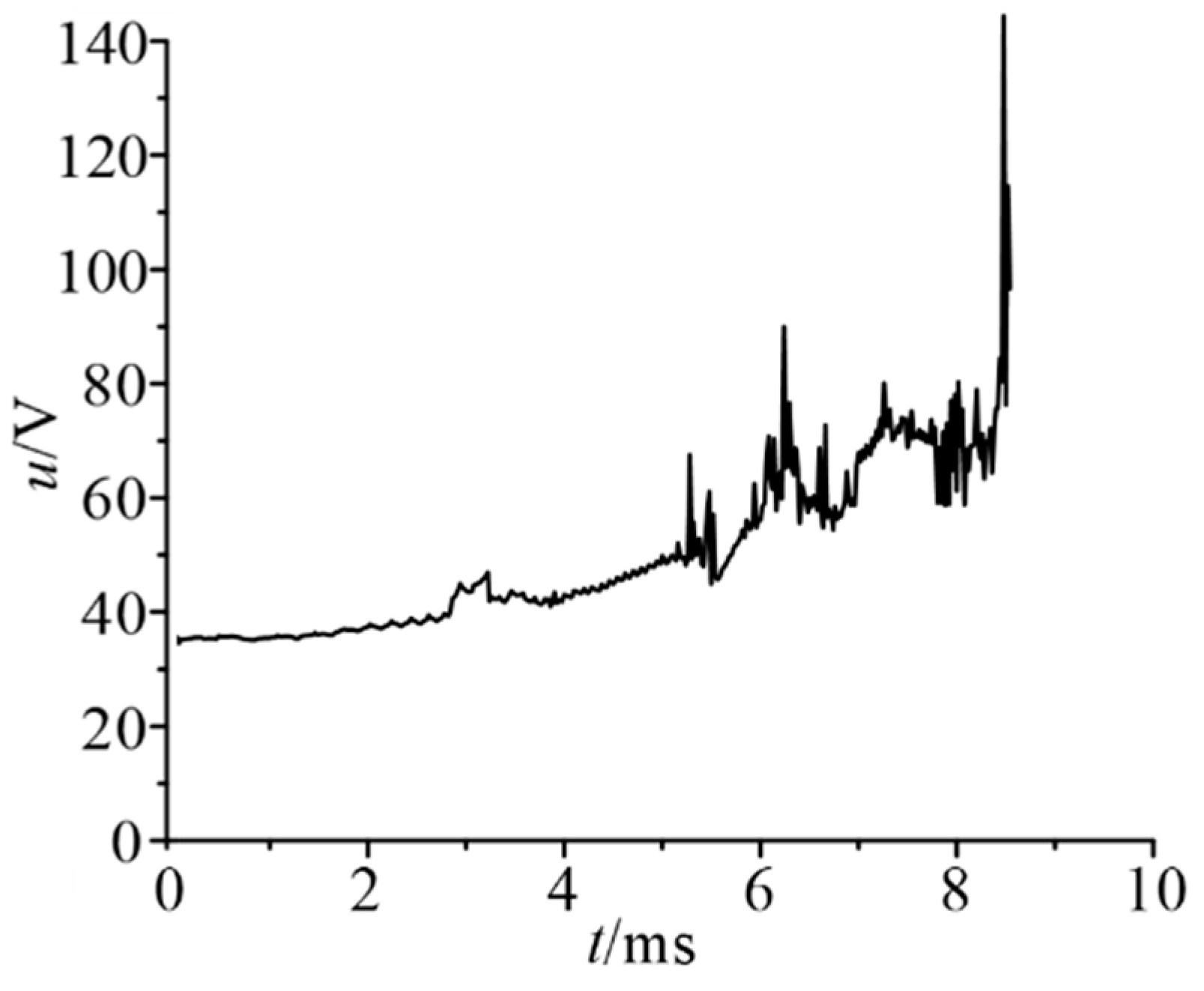

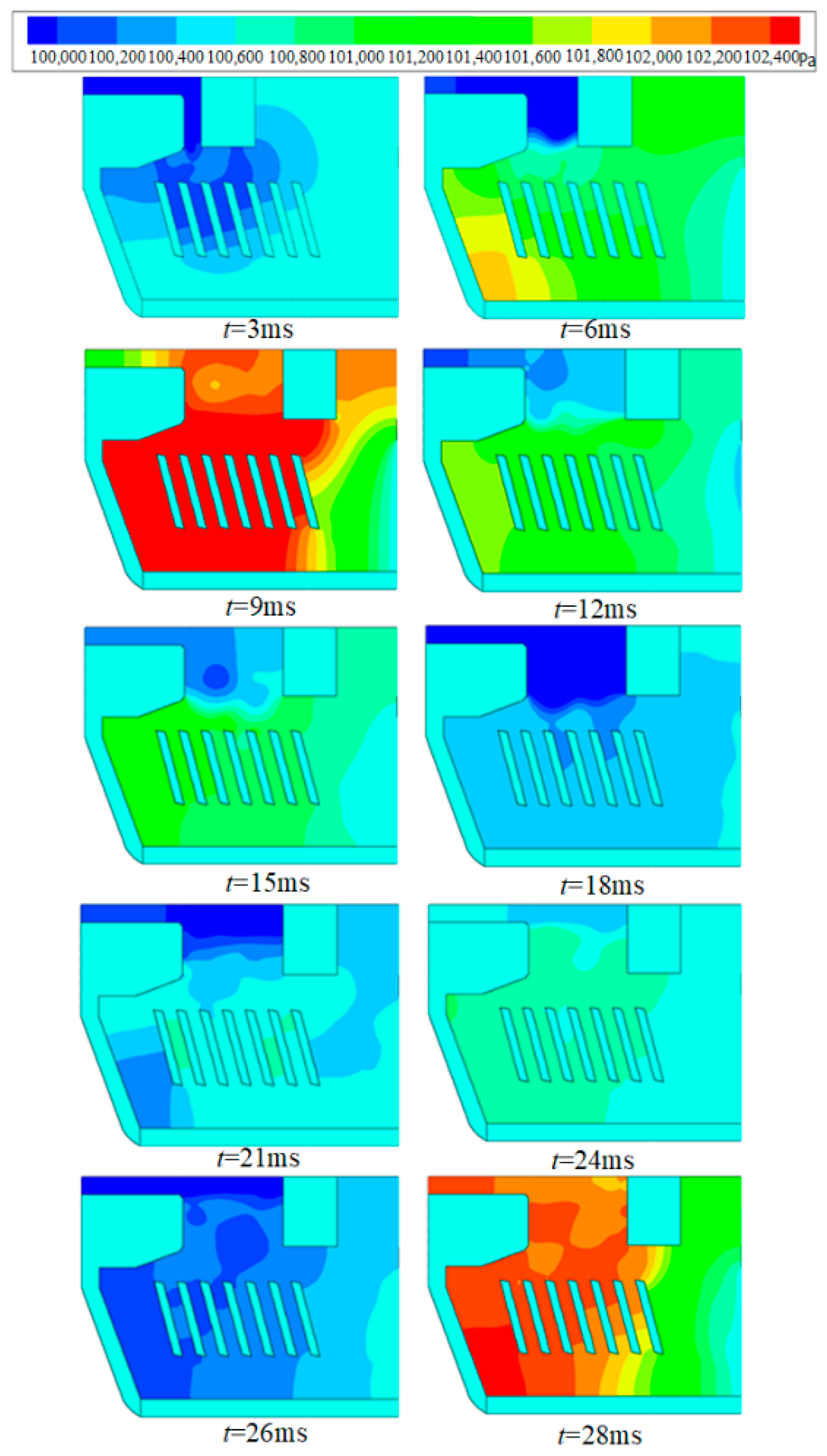
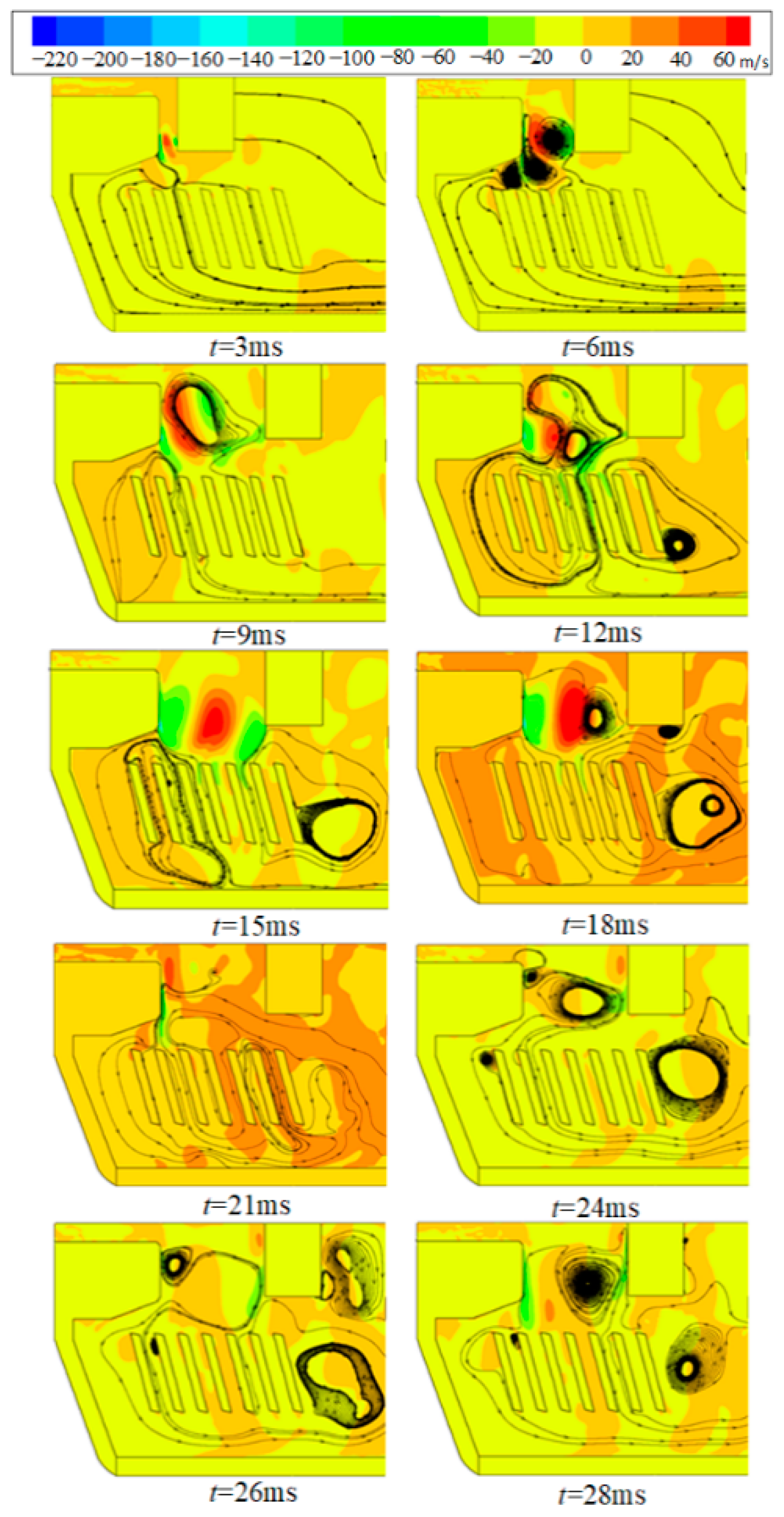
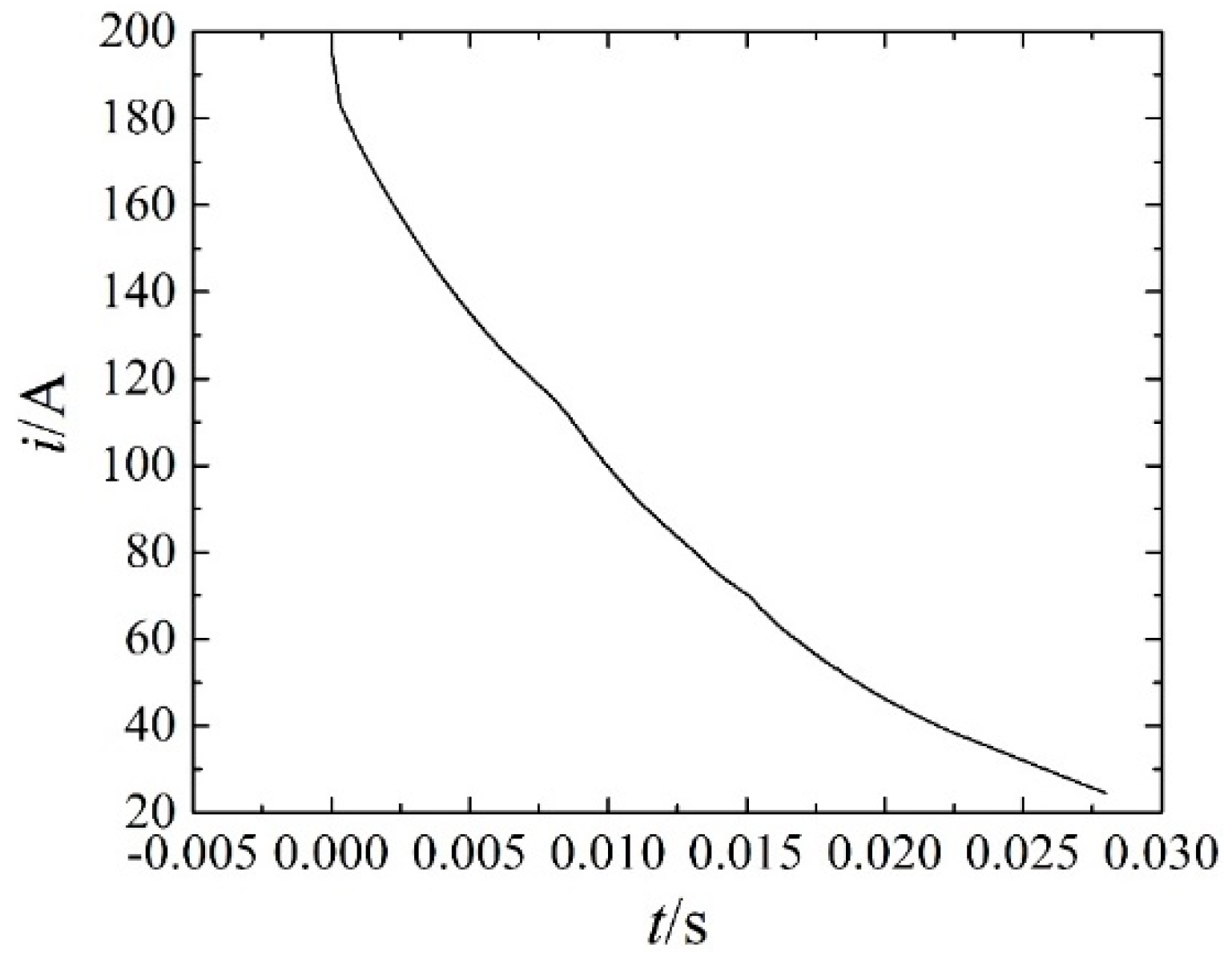




Publisher’s Note: MDPI stays neutral with regard to jurisdictional claims in published maps and institutional affiliations. |
© 2021 by the authors. Licensee MDPI, Basel, Switzerland. This article is an open access article distributed under the terms and conditions of the Creative Commons Attribution (CC BY) license (https://creativecommons.org/licenses/by/4.0/).
Share and Cite
Yin, J.; Yu, S.; Ge, S.; Liu, X.; Liu, C. Simulation Analysis of Arc Interruption Characteristics in Disconnector. Machines 2022, 10, 6. https://doi.org/10.3390/machines10010006
Yin J, Yu S, Ge S, Liu X, Liu C. Simulation Analysis of Arc Interruption Characteristics in Disconnector. Machines. 2022; 10(1):6. https://doi.org/10.3390/machines10010006
Chicago/Turabian StyleYin, Jianning, Shanshan Yu, Shiwei Ge, Xinghua Liu, and Chao Liu. 2022. "Simulation Analysis of Arc Interruption Characteristics in Disconnector" Machines 10, no. 1: 6. https://doi.org/10.3390/machines10010006
APA StyleYin, J., Yu, S., Ge, S., Liu, X., & Liu, C. (2022). Simulation Analysis of Arc Interruption Characteristics in Disconnector. Machines, 10(1), 6. https://doi.org/10.3390/machines10010006






